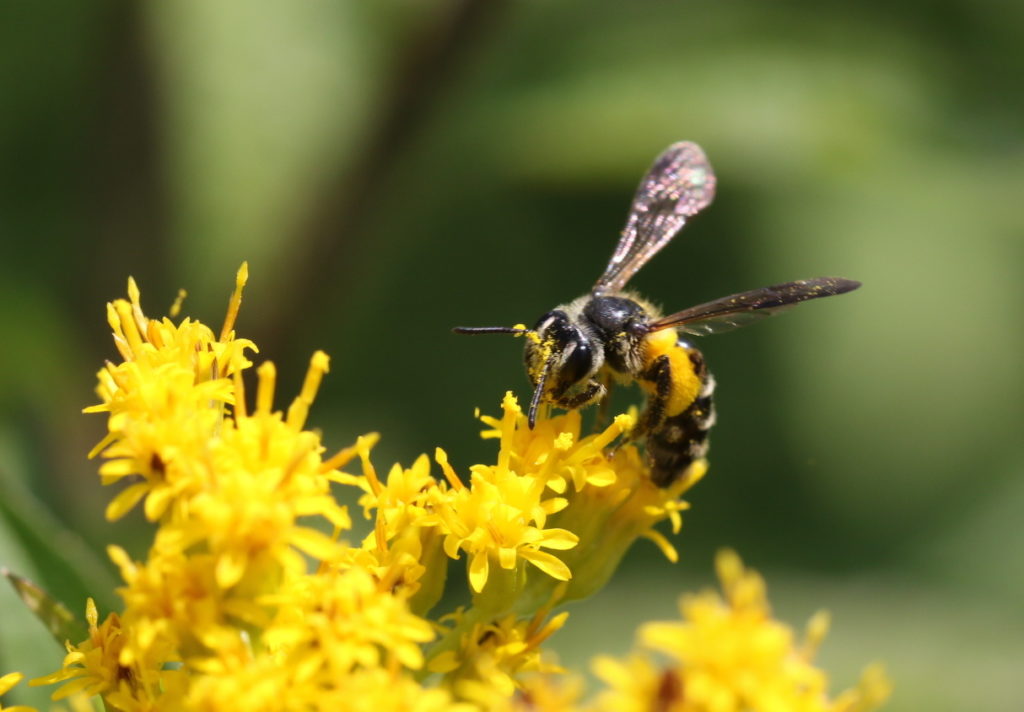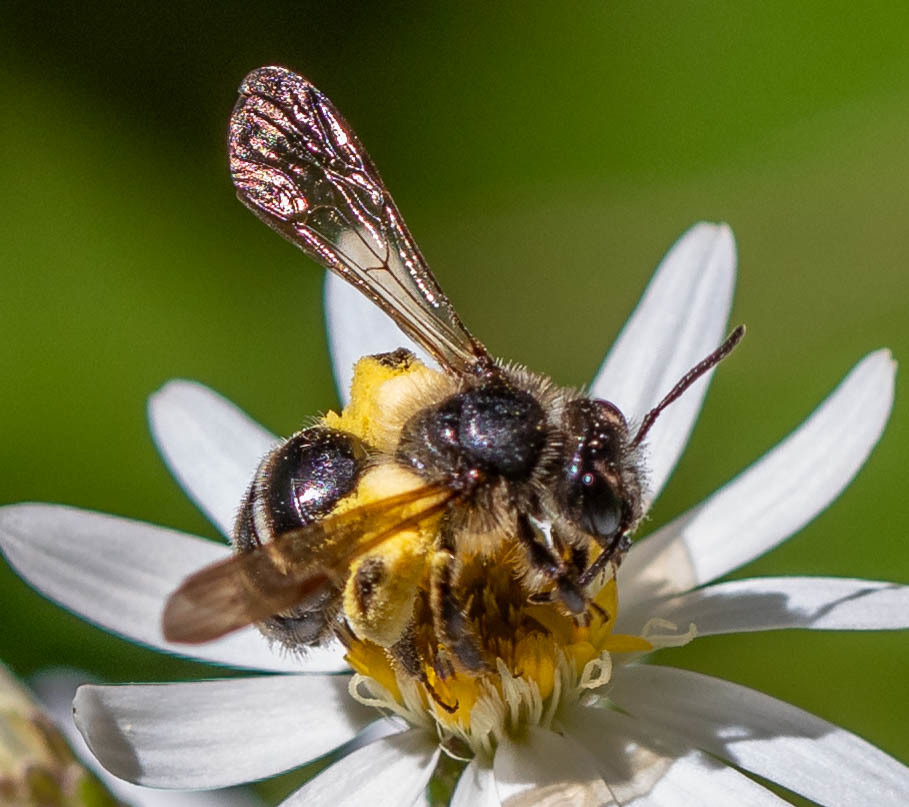A Poorly Known Bee Hiding in Plain Sight
The Vermont Wild Bee Survey is no stranger to remarkable discoveries and new state records. With over 50 species added to the Vermont bee list in the past three years, the average state record is hardly newsworthy. Yet, one recent find is surprising in several ways, even if it doesn’t end up being a new species for the state.
While identifying specimens from the Zadock Thompson Zoological Collections, Spencer Hardy, the Vermont Wild Bee Survey project coordinator, found three nearly identical bees that he didn’t recognize. Before putting them under a microscope for final ID, he had sorted them into a row of the moderately common Cloudy-winged Mining Bees (Andrena nubecula). Under a microscope, however, these three bees were drastically different. Using a couple identification keys, he was able to narrow the mystery bees’ identity down to three closely related species. However, things only got murkier from there, as none of these three species were well known or commonly collected. Different sources gave a variety of ID features and ranges for the three species, and at least one source lumped two of them together.

Female Cloudy-winged Mining Bee © Spencer Hardy
Realizing that this mystery bee had been collected in three different counties over three years, Spencer figured there were probably more of them out there—so, he went looking. Given that it was mid-October, finding live ones likely wasn’t feasible, so he pulled up all the iNaturalist observations that had been identified as Andrena nubecula. Within a few minutes, he found at least four “Research Grade” observations of Andrena nubecula that matched the mystery specimens much better. Both species have dark wings and thick white bands on the abdomen, which was what many bee watchers (including Spencer) had been using as ID characters for pictures of Andrena nubecula. Since the other three species are so poorly known and photos of live specimens aren’t available, it was easy to overlook the distinct differences between the two species; namely the greater extent of dark hairs on the back and face of the mystery species.

One of the mysterious dark-haired bees in the Subgenus Cnemidandrena. © Lisa (iNaturalist user marklisa91)
But what to call these bees? After some correspondence with global bee experts, it seems there are two likely options—Andrena robervalensis or Andrena peckhami. The latter is a northwestern species confirmed in Vermont from a single 1956 specimen. The few published records for this species are from late summer (mostly in July), but all of the mystery bees Spencer found were photographed or collected in September. The sample size is smaller for Andrena robervalensis, but it appears to be a late fall species with scattered records from southern New England and states farther west. It is also possible that one or both of these names will change, as they are part of a group (with a few other western species) that is in desperate need of further study. It may take an ambitious graduate student before we have a definite answer, but hopefully our Vermont discoveries will help clarify the identity and distribution of at least one species.






